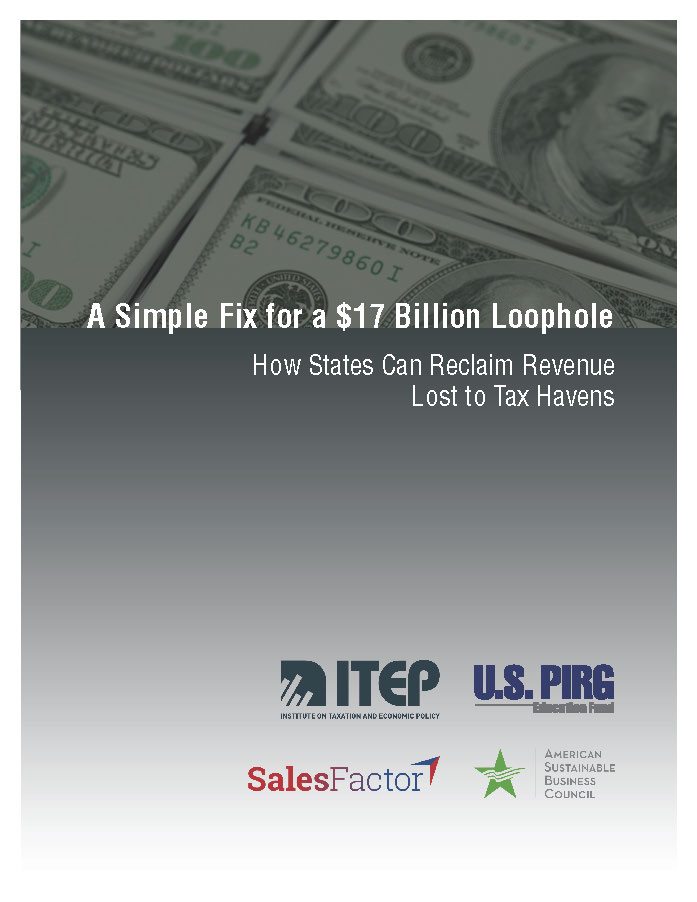A core problem with our corporate income tax laws at the federal and state levels is that they allow companies to use accounting gimmicks to shift significant amounts of their profits into low or zero-tax jurisdictions.
Federal lawmakers had an opportunity to address this with the 2017 tax law, but they failed to do so, and, in fact, the law may incentivize more offshore tax avoidance. State lawmakers, however, can buck the federal trend and crack down on profit shifting themselves.
A new study released today, A Simple Fix for a $17 Billion Loophole, by ITEP, the U.S. PIRG Education Fund, SalesFactor.org, and the American Sustainable Business Council (ASBC) finds that states could raise as much as $17 billion in additional revenue in one year by developing legislation that would make it harder for companies to avoid taxes by shifting profits into domestic or offshore tax havens. The simple fix is mandating that corporations pay taxes based on their total worldwide profits and where they are doing business.
Worldwide combined reporting, or complete reporting, requires companies to report their total global profits and pay taxes on these profits based on the overall portion of business they conduct in the given state. For example, if a company reports 5 percent of their business in a state (usually measured by some combination of sales, payroll, and assets), then 5 percent of their profits would be subject to the state’s corporate income tax. Under this system, companies would no longer be able to pretend that a substantial portion of their profits are located in tax havens because these profits would be included in calculating how much of their profits should be taxed in the state.
Many states in recent years have taken some action to combat tax havens. On the domestic side, 27 states and the District of Columbia have enacted combined reporting, which requires companies to aggregate their profits across the United States. According to the report, expanding this policy to every state would raise $2.85 billion annually by cracking down on interstate profit shifting. In addition, five states and the District of Columbia have gone beyond combined reporting by requiring companies to include profits from known tax havens in their total income calculation. Leading the way, Montana enacted this reform in 2003 and estimated that it would raise $8.9 million in revenue in fiscal year 2017. While the tax haven list approach can yield some revenue, the lists are often incomplete and the approach generally is not as effective as worldwide combined reporting.
The idea of states enacting worldwide combined reporting is not new. States experimented with the policy during the 1980s, but corporate interests organized to stamp out these efforts. Since the 1980s however, the size and scale of tax avoidance has grown by leaps and bounds, making the policy even more necessary today.
Tax avoidance is especially damaging at the state level because due to balanced budget requirements, every dollar that lawmakers allow companies to avoid must be offset by higher taxes on average taxpayers, or by funding cuts to key public services. Also, as one of the most progressive sources of revenue at the state level, it is important to restore the state corporate income tax to help balance the otherwise very regressive features of most state tax codes.
Unfortunately, states have been experiencing a “rapid decline in state corporate income tax revenue,” even despite the increasing profits corporations have been earning in recent years. One of the driving factors in this decline is the increasing prominence of interstate and international tax avoidance. States should enact worldwide combined reporting to prevent tax avoidance and restore the integrity of their corporate income taxes.
For more details read the full report: A Simple Fix for a $17 Billion Loophole: How States Can Reclaim Revenue Lost to Tax Havens





